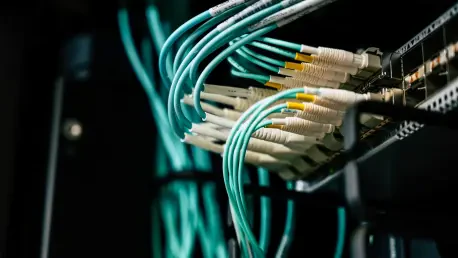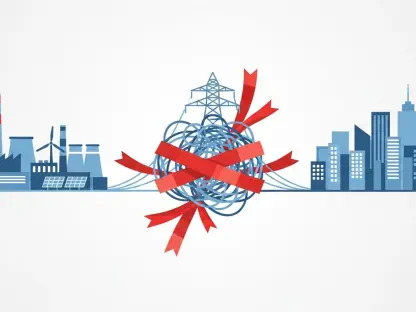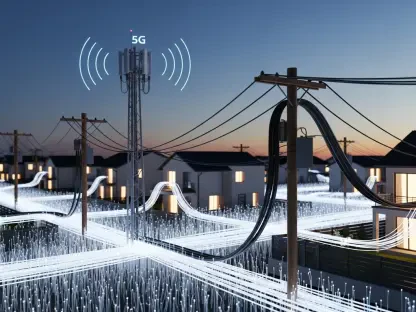In an era where military operations hinge on split-second decisions and unbreakable communication, the advent of fiber optics has emerged as a transformative force reshaping the landscape of defense connectivity. Picture a battlefield where autonomous drones, ground troops, and command centers must exchange critical data instantly, even amidst electronic interference or harsh conditions. Traditional copper-based systems often falter under such pressure, struggling with limited bandwidth and vulnerability to interception. Fiber optics, however, offer a groundbreaking solution by transmitting data via light through ultra-thin glass strands, ensuring speed, security, and reliability that modern warfare demands. This technology is not merely an enhancement but a fundamental shift, enabling seamless real-time coordination across vast distances and complex environments. From naval vessels to remote outposts, fiber optics are becoming the backbone of military networks, addressing the escalating need for high-speed data transfer in an age of artificial intelligence and unmanned systems. This article explores the profound impact of fiber optics on military communication, delving into their advantages over legacy systems, the rapid evolution of the technology, the challenges being overcome through innovation, and the future potential for defense applications. As global threats grow more sophisticated, understanding how this technology fortifies military readiness is essential for grasping the trajectory of modern defense strategies.
Unmatched Advantages in Defense Applications
Fiber optics hold a decisive edge over traditional copper cables, particularly in the high-stakes realm of military operations where every advantage counts. Unlike copper, which transmits data through electrical signals prone to degradation over distance, fiber uses light to achieve staggering bandwidth and clarity, even across vast expanses. This capability is vital for linking far-flung military installations or supporting data-heavy applications like real-time surveillance. Additionally, the lightweight nature of fiber cables proves invaluable for mobile units, drones, and wearable soldier tech, where reducing burden can directly enhance operational agility. Security is another cornerstone benefit—fiber is notoriously difficult to intercept, safeguarding classified transmissions from espionage. Immunity to electromagnetic interference further cements its reliability in environments saturated with radar or electronic warfare tools, ensuring uninterrupted communication when it matters most. These attributes collectively position fiber optics as a superior choice for defense forces aiming to maintain a tactical edge in increasingly complex scenarios.
Beyond technical superiority, fiber optics excel in adapting to the punishing conditions often encountered in military settings. Their resilience against extreme temperatures, moisture, and physical stress makes them suitable for deployment in deserts, arctic zones, or aboard naval ships battered by relentless vibrations. This durability translates to fewer system failures, a critical factor when lives and missions hang in the balance. Moreover, the ability to maintain signal integrity in compact or confined spaces—such as inside aircraft or armored vehicles—adds to their versatility. As military operations increasingly rely on interconnected systems for everything from logistics to battlefield intelligence, the adoption of fiber optics ensures that communication remains a strength rather than a liability, paving the way for more agile and responsive defense strategies across diverse theaters of operation.
Rapid Technological Evolution and Market Surge
The journey of fiber optic technology in military contexts reveals a relentless push toward greater performance, driven by the urgent needs of modern warfare. Early standards like OM1, once sufficient for basic data transmission, have given way to advanced iterations such as OM5, capable of supporting speeds up to 100 Gb/sec over extended ranges. This leap is made possible through sophisticated methods like wavelength-division multiplexing, which allows multiple data streams to travel simultaneously with minimal delay. For military networks grappling with the deluge of information from AI-driven analytics, unmanned aerial vehicles, and high-definition sensors, such advancements are indispensable. Low latency and high capacity ensure that commanders receive actionable intelligence without the bottlenecks that plagued older systems, directly impacting mission outcomes in dynamic combat zones.
Parallel to technological strides, the market for fiber optics in defense is experiencing explosive growth, reflecting a broader recognition of its strategic importance. Projections indicate that the sector, valued at $6 billion last year, could climb to nearly $16 billion by 2034, fueled by escalating demands for robust connectivity in applications ranging from space-based platforms to ground operations. This surge is not merely a financial trend but a response to the evolving nature of threats, where cyber warfare and data-intensive systems necessitate infrastructure that can keep pace. As nations invest in upgrading their military capabilities, fiber optics stand out as a linchpin for enabling secure, instantaneous data exchange, ensuring that defense forces remain ahead of adversaries who exploit any communication lag or vulnerability in an interconnected global landscape.
Tackling Obstacles with Cutting-Edge Solutions
While fiber optics offer transformative benefits, their integration into military environments has not been without significant challenges that demand innovative responses. The inherent fragility of glass cores poses a risk of breakage, especially in high-impact or vibration-heavy settings like fighter jets or armored convoys. Signal loss due to misalignment or environmental contaminants has also historically hindered performance. Yet, the industry has risen to these challenges with remarkable ingenuity. Modern fiber cables are now engineered with rugged coatings to endure extreme conditions, while streamlined repair techniques minimize downtime during critical operations. These developments ensure that even in the harshest theaters of war, connectivity remains steadfast, supporting troops and systems without faltering under pressure.
Further addressing deployment hurdles, breakthroughs such as bend-insensitive fiber have revolutionized how this technology functions in constrained spaces, maintaining data integrity even when cables are sharply curved or tightly packed. Enhanced connector designs and precision polishing methods have drastically reduced signal loss, proving essential for high-stakes applications like naval radar or satellite communications. Real-world examples underscore the payoff of these innovations—take the recent “Fiber Deep” project at a major military base in Hawaii, which not only slashed operational costs by millions but also fortified network security. Though barriers like protracted procurement processes and supply chain disruptions persist, such success stories highlight that persistent innovation can surmount even the toughest obstacles, making fiber optics a reliable cornerstone for military communication needs.
Building Tomorrow’s Defense Networks
As military operations evolve with ever-greater complexity, fiber optics are set to play a pivotal role in future-proofing defense communication networks against emerging challenges. Their capacity to deliver high-speed, low-latency data transmission while resisting interference positions them as a vital asset in countering sophisticated cyber threats and supporting next-generation technologies. Whether it’s powering AI for predictive battlefield analytics or ensuring seamless coordination between isolated units and central command, fiber provides the infrastructure needed to maintain operational superiority. This adaptability is crucial as defense strategies increasingly hinge on rapid, secure data flows to navigate the unpredictable nature of modern conflicts across diverse domains.
Looking to the horizon, the broader implications of fiber optics extend beyond immediate tactical gains to shaping long-term military readiness. Continued investment in upgrading aging infrastructure with advanced standards like OM5 will be essential to meet escalating data demands over the coming years. Addressing systemic issues such as slow adoption cycles and supply constraints will require collaborative efforts between defense agencies and tech innovators to streamline integration. Ultimately, the path forward lies in leveraging fiber optics not just as a tool, but as a strategic foundation for resilient, interconnected military ecosystems. By prioritizing these advancements, defense forces can ensure they remain equipped to tackle tomorrow’s threats with the speed, security, and precision that only cutting-edge connectivity can provide.









